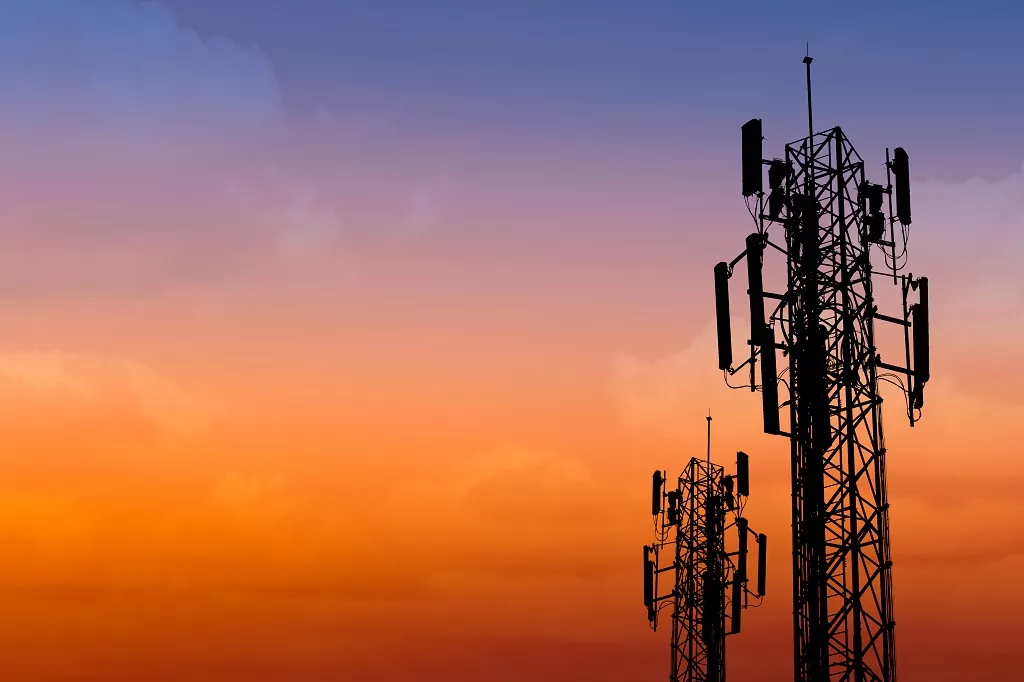Here’s why you lose your internet connection when you get a phone call and how to fix it:
When this happens, it is because your phone is using older voice communication methods and systems.
Modern voice communication on a cellular network uses VoLTE to communicate.
While you are on a VoLTE call, you can use the internet, but if you are not on a VoLTE call, you cannot use the internet.
So if you want to learn all about why you lose your internet connection when receiving a phone call, then this article is for you.
Keep reading!

What Is VoLTE and How Does It Prevent Losing Your Internet Connection When You Make a Call?

VoLTE stands for voice over LTE, which includes a second abbreviation.
LTE stands for Long Term Evolution, and it refers to the same LTE that gives you high-speed internet on your smartphone.
LTE was developed to advance data communications, and as that infrastructure was being developed, carriers realized that they could channel voice calls through that infrastructure.
That led to the development of VoLTE.
The key thing to understand about VoLTE is that it does not use traditional phone lines and switches or their architecture.
Traditional phone calling over cellular networks still does use that switching concept.
So, if you’re using a legacy call architecture, it’s functioning in a completely different way than if you use VoLTE.
This has many consequences, some of which are outright advantages.
VoLTE is used by virtually all major carriers because of these advantages.
For starters, VoLTE calls are high definition, making for better voice quality than what can be achieved through eh legacy systems.
VoLTE also works much, much faster.
Traditional phone communication runs through a lot of switches and copper connections.
These can’t transmit the information as fast as modern, digital LTE networks.
When you connect via VoLTE, it’s virtually instantaneous, and you don’t get call delays.
On older systems, it takes longer to connect, and delay is a common side effect of the way the call works.
VoLTE also uses much less battery to complete a call.
The legacy systems are not nearly as efficient, so calling over LTE takes advantage of modern improvements in communication and power efficiencies.
Lastly, VoLTE enables more security and features than legacy systems.
VoLTE is entirely digital and built on a fast communication framework.
It’s easy to imagine that these systems can handle more security protocols and features at the same time than the older technology.
Why Do You Need VoLTE for Internet and Calls at the Same Time?

You know what VoLTE is now, but it still might not be clear why it affects your ability to use the internet while on a call.
This boils down to how phones place calls.
As you know, VoLTE enables phones to complete calls using the data connection.
As long as there is enough bandwidth, the VoLTE call is analogous to having another data-enabled app running on your phone.
We’ve all multitasked internet features, so it makes sense that this can work.
When a phone uses non-VoLTE calling, it has to communicate on a different channel on the cellular network.
Cellular connections were originally designed for voice features and not for internet connections.
As the systems grew in sophistication, channels for voice calls were kept separate to make infrastructure improvements simpler and more affordable.
Carriers essentially build the data network side by side with the call network that was already functioning.
So, when you connect to the legacy call infrastructure, your phone has to use its antennas to communicate in a different way, and the phone cannot process both types of communication simultaneously.
This might make more sense if we look specifically at the differences between LTE and other cellular connections. LTE was designed expressly for data communication.
The existing Gs were already in place (at least 1G through 3G) as LTE was developed and deployed.
In fact, LTE somewhat bridged the gap between 3G and 4G (although it has been updated since and currently functions with 5G LTE).
When LTE was being developed and deployed, carriers realized that running voice over that system would ultimately offer more and better service options.
But, because LTE was built separately from the existing infrastructure, it was always on its own channels in the carrier network than the legacy voice communication.
LTE is the key here.
When you have voice over LTE, both internet and call are on the same channel, and that’s easier for the phone and the carrier network to manage.
If you try to use two different channels at the same time, you split resources, and the internet functionality will slow to a crawl (if not an outright halt).
Are There Problems With VoLTE and Your Phone’s Internet Connection? (2 Factors)

While VoLTE is a preferred way to place calls, it can run into problems of its own.
A few limiting factors can prevent you from using VoLTE, ultimately preventing you from using the internet while on a call.
#1 Insufficient Data Speeds
Connection speeds are one of the great limiting factors in using VoLTE.
If the data connection isn’t strong enough, it can’t support a phone call.
In this case, your phone will automatically switch back to using the legacy phone call method.
This takes your call off of VoLTE, and you can no longer access the internet while you are on your call.
This can happen for a number of reasons.
A common situation occurs when you are on Wi-Fi.
Phones typically default to Wi-Fi access to improve stability and reduce data usage over the carrier network.
But, sometimes, Wi-Fi underperforms.
If your Wi-Fi connection is running slowly, it won’t be able to support a VoLTE call.
The call will run on legacy systems instead, and you have a problem with simultaneous functionality.
The easy solution to this problem is to turn off your Wi-Fi and try connecting solely on LTE.
Additionally, troubleshooting and resolving Wi-Fi issues solve the problem.
Other times you might not be on Wi-Fi and still run into slow internet connections.
These problems are entirely carrier-based, but they run into the same final result.
The VoLTE call can’t complete, so the phone defaults to legacy methods, and you lose internet access until the call is over.
These problems are harder to fix and resolve, but the issue will go away as soon as you can get normal carrier network speeds.
#2 Limited Availability

Availability is a second issue.
As much as carriers have built a robust cellular infrastructure across the land, there are still coverage gaps.
When you get into remote areas, it’s common to see your connection downgrade off of LTE to 3G or even lower.
When you don’t have an LTE connection, you can’t use VoLTE.
It literally runs on the LTE framework, so these coverage gaps create a problem.
The irony is that some 3G networks have sufficient internet speed to handle a VoLTE type of call, but the systems simply can’t communicate in that way.
With the limited service, your phone defaults to legacy calling, and even though you have enough bandwidth on the 3G network, you can’t use the internet on the phone until the call is completed.
If you’re on 1G or 2G, then this point is moot.
Those systems can’t connect with enough bandwidth for a VoLTE call, and they don’t support LTE.
In such a coverage gap, you clearly have limited options and probably can’t even load simple web pages.
The only solution is to move to better coverage or look for a fast Wi-Fi connection.
The Wi-Fi connection will not enable VoLTE, but it can enable other VoIP calling options.
What About Wi-Fi?

This brings up an important question.
How does Wi-Fi play into placing calls and using the internet at the same time?
Even without VoLTE, can you use Wi-Fi for simultaneous functionality?
Yes. There are a few ways that Wi-Fi can interact with the other communication systems on your phone.
The first to cover is Wi-Fi calling.
Wi-Fi calling works a lot like VoLTE, but it uses your Wi-Fi network instead of the cellular network.
Modern phones allow for Wi-Fi calling without you having to install any additional apps or services.
Since digital voice is already well established and structured, your Wi-Fi connection simply bridges gaps that might exist in the cellular network.
You do have to enable Wi-Fi calling, but when you do, it will feel virtually identical to a VoLTE call.
The clarity and response will be comparable, and you will be able to use the internet normally while you are on the call.
The only limiting factor is the bandwidth on the Wi-Fi network.
As long as it can keep up with what you are doing, there will be no problems.
Modern devices can even switch a call between VoLTE and Wi-Fi without missing a beat.
As long as the method is allowed, you shouldn’t even notice the switch happening.
The phone will simply default to the connection that is better at the moment.
The other impact of Wi-Fi is pretty simple.
Your phone can use Wi-Fi while it is on a call.
Whether you are using VoLTE or any other communication method, your phone can separately use the phone call systems and Wi-Fi simultaneously.
So, if you are connected to a Wi-Fi network, you shouldn’t lose internet connectivity because you are on a call.
Keep in mind the potentially confusing exception.
When you are on a mobile Wi-Fi network, it might be connecting through your phone’s carrier network (if your phone is running the mobile network).
In this case, Wi-Fi does not compensate for the connections, and you will need VoLTE to talk on a call while also using the internet.

